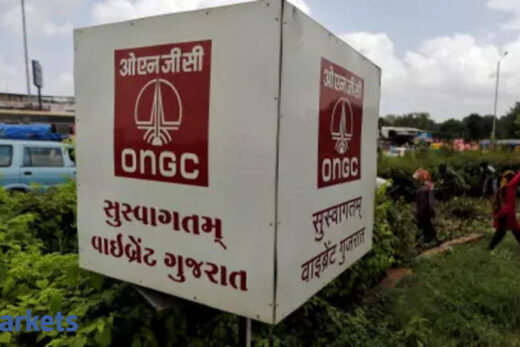Do you believe that metals are good to go for long?
Metals should not really be looked at from the point of valuations. They are a trading play. The question is in which part of the cycle you get in and which part of the cycle you get out. From that perspective, we still have some way to go before the cycle peaks. Essentially, we are working on the assumption that inflation will come back irrespective of what anybody may say, especially the regulators. It will not be possible to control it very easily by central bank or government action. As a result, most old economy plays which will be classified as value are the ones that are likely to do well. Among them, companies which are economy-facing and especially metals and other cyclicals are likely to benefit. Already, a large part of that has played out but if you were looking at a move of 100, so far you have probably seen a move of 60 out of 100. I would argue there is still another 40 to go.
Given the kind of movement in PSUs with hiving off and selling the Numaligarh refinery in Assam, or for that matter, moves in , don’t they merit a relook?
From almost the last quarter of last year, I have been saying that if we are looking at a value move, then PSUs are the most under-owned sector and within PSUs, one is looking for the profitable ones which means that power, refinery and things like that would do reasonably well. Again some part of that play has actually happened and there is still some more steam to go, especially in those sectors where there is at least an attempt to disinvest completely. For example if the government is dressing up BPCL to be able to sell it, it is almost inevitable that other refineries, the OMC companies in the similar space which are also public sector owned will also get a rub-off effect in terms of pricing.
Many of the other PSUs which are not profit making, are less likely to benefit because unless they have real estate, there is not much to go on. But overall, the power distribution companies especially are less prone to issues in terms of recovery of money than the power generating companies. All these sectors will continue to do well including the public sector banks for a change because it is not a question of having bad NPAs any more. From here on, the book values will start reflecting in the prices and perhaps a bit higher multiple than one which means that there is still some steam to go in many of the public sector banks as well.
Where is it that you stand on the entire vaccine rollout trade? Would the discretionary spends and the malls, aviation, hotel and multiplex stocks come to the fore?
Eventually it will but right now, the fear of Covid variants remains. But that said, if one looks for any winners among these stocks, it is likely to be airlines stocks because there the capacity shrinkage has been the highest. Today already the airports are full up and all the flights are fully booked. The companies which have managed to survive the lockdown, would be able to price themselves more effectively and they may actually be able to make more money if they have survived thus far.
There are more structural problems with the likes of PVR etc, because with the OTT habit getting entrenched and even the producers getting on to OTT platforms to make fresh content, this kind of monopoly position that distribution had in terms of PVR kind of companies in terms of launching new content is now no more there.
Hotels will slowly come back because they are hard assets. Maybe this is a good time to get in if one has a long enough timeframe because now they are relatively cheap. The mid-range ones are likely to benefit a lot more as business comes back to normal.
What is the outlook on the commodity super cycle that has begun.Is this just a flash in the pan?
I answered that a little while back when I said that the commodity rally in metals will continue because essentially we are looking at a weaker dollar. Now, if the dollar is weaker, the question is it is weaker against what? It is weaker against every other commodity and that essentially means that all commodity prices will go up, including oil, at some stage. It has gone up a bit. A lot more is there. Essentially, the whole premise works on the basis that we are back in inflationary mode and I have a very simple argument which nobody seems to be looking at.
What can we expect in the coming quarters when it comes to earnings?
For one more quarter if not two, the numbers are likely to look quite good, after which I expect to see two factors coming through; one is the fact that prices have risen and therefore raw material prices will also come through and that will put some amount of pressure on the margins.
The second thing is that costs of manpower will start to rise again because if the companies are making that much money, the employees will be looking to get a share of it. Therefore, one could expect a peak margin condition happening either in March or June at worst and after that, one should get a more normal earnings growth, which means that most of the earnings growth that you are looking at in the next year or two is coming from large sectors like banking.
For example, where there has been a turnaround in corporate banking because of the fact that credit costs are going to be lower, that is where the demand will continue to grow. Many of the other sectors which have seen surprises for the near term especially last quarter because of the fact that they managed to crush down the cost while maintaining some amount of top line growth, are not likely to see the same kind of performance coming through unless one assumes that inflation remains rampant. In that case, many of the bets are off in terms where the market goes because then RBI will be forced to increase interest rates and so on.
Right now, the assumption is that we are looking at an interest rate scenario which will remain reasonably benign for at least the next two quarters and after that we will have to see how the market takes it. Coming back to where the earnings are likely to be, as I said it would be mostly the banks and cyclicals but going into next year, we would start finding that the margin pressures are beginning to come through. Analysts are currently projecting an earnings growth of 35% which in my view will be a little more challenging to deliver for the whole year.
How are you looking at the movement in the broader markets. Would you lean towards clusters or niche spaces like agri, fertilisers or speciality chemicals?
A constant sector rotation is going on and it is a little difficult to keep on trying to stay up with the latest set of sectors. So long as our assumption of interest rates remaining within a range but inflation moving up remains as an operating parameter, we are looking at value companies continuing to do well. Therefore, the cyclicals, oil and gas, gas distribution and similar companies are the ones that are likely to continue to play catch up.
Once that happens and they get to a stage where they are no more value, then one will have to go back and look for those companies which are a little more growth-oriented. This year, we may actually get some growth because even FMCG companies will benefit from inflation. While there may be 5-10% volume growth depending on the category you are in, even 6-8% price increase and 17-18% top line growth can be expected for most FMCG companies at least in terms of being able to deliver a strong double digit earnings growth for the next few quarters at least.
Broadly the cyclicals are likely to do well over a longer term for the next 12 months or so, assuming the interest rate scenario does not go out of control.



